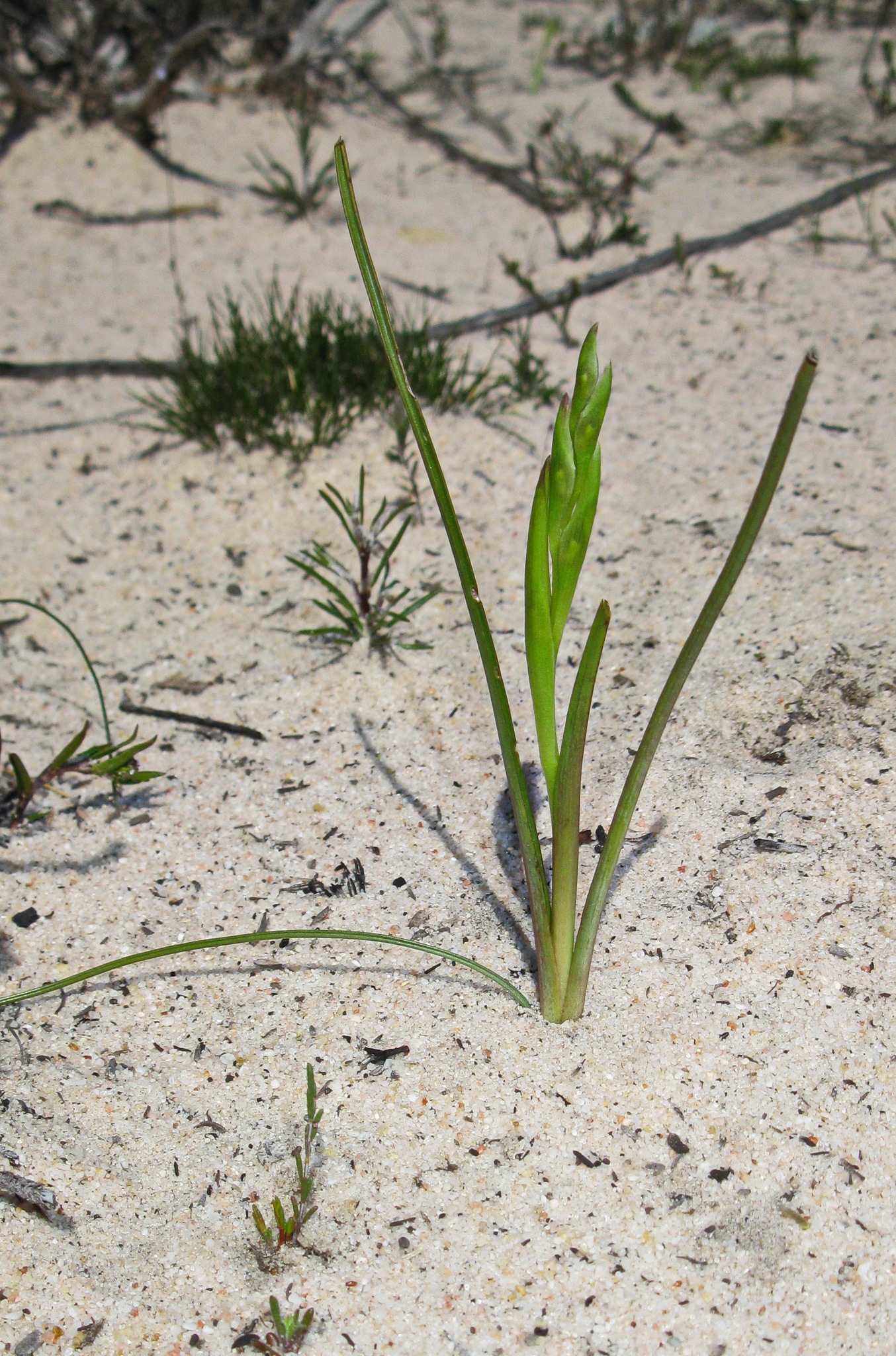
Greek dis – two; oura – tail; the lateral sepals are often long and tail-like.
Terrestrial herbs, sympodial, deciduous.tubers ovoid, lobed or elongate, often paired at base of leaf, sometimes also produced singly at ends of short fleshy roots. Leaves 1?10, basal, channelled, linear, rarely spirally twisted, margins entire, thin-textured, green, stalkless. Inflorescences a terminal raceme, erect. Flowers resupinate, 1-several, small to medium sized, yellow, sometimes with brownish or purplish blotches. Sepals free, dissimilar, dorsal broad, erect or curved backwards, laterals narrow, pointing downwards or forwards. Petals free, often clawed, longer or shorter than lateral sepals. Labellum deeply 3-lobed, free, keeled. Column very short, winged. Pollinia 2, mealy.
These native terrestrial orchids are occasionally grown in pots by enthusiasts. Some species are quite hardy and grow well and multiply in a light well-drained compost.
About 55 species mostly from Australia, 1 species from Timor.
Medium sized terrestrial with predominantly yellow or purple flowers; lateral sepals often long and narrow, pointing downwards behind the 3-lobed labellum.
Backhouse & Jeanes (1995).
Source: (2005). Orchidaceae. In: . Horticultural Flora of South-eastern Australia. Volume 5. Flowering plants. Monocotyledons. The identification of garden and cultivated plants. University of New South Wales Press.
